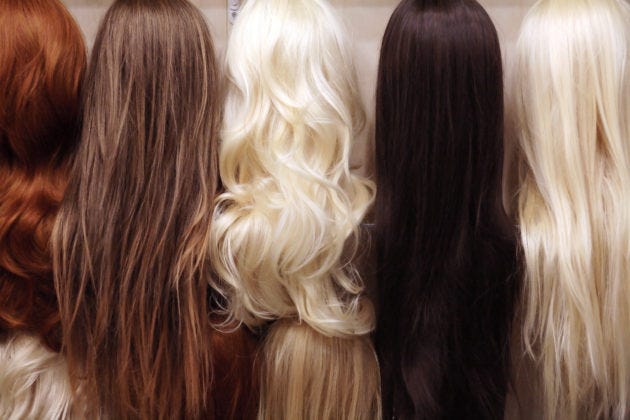What You Need To Know About Wigs
Wigs are now ubiquitous. You can hardly walk across the streets of New York without seeing someone wearing a shiny, lustrous wig. Wigs are gotten from several sources, some of which are human hair, horsehair, synthetic compounds. They are also used for several reasons, ranging from aesthetics, modeling, and even culture.
Fashion has evolved over the years, and so are its elements. The types and styles of wigs have evolved. Wig lovers now have the liberty to choose from a wide variety of wigs such as frontals, headbands, lace-front, and synthetic units. Asides from the versatility and comfort they provide, wigs make it easy to change your looks without having to damage your natural hair. According to hairstylist Kellon Deryck, “ People don’t like to put heat on [or color] their natural hair. With these wigs, [you can] change your hairstyle frequently without ruining the integrity of your natural hair…You get this flawless look without having to press out your edges or color your hair times can vary in price depending on the type and manufacturer. Human hair wigs, which are known to be the highest quality hair, can range between $200 to $5000. Human hair wigs can last several years if handled carefully.
Types Of Wig
1. Human Hair Wigs
As costly as they may be, human hair wigs offer the best value for money invested. They can vary by their origin. There are four different types of human hair wigs – Chinese, Caucasian, Indian and European. Of these human hair wig types, European wigs are the most sought after. It is the finest of all human hair types, and its denier is very smooth. Apart from European hairs, Indian human hairs are also sought after. They have a very fine denier, just like the European human hair wigs. The denier of a wig can determine its ability to curl. European and Indian hairs can be easily curled due to their very thin deniers.
2. Synthetic Wigs
Synthetic wigs are common among models. Though synthetic wigs are not as flexible as human hair wigs, they can be easily styled. They can also retain that style for a long while -Most synthetic wigs retain their styles even after being washed. A major disadvantage of Synthetic wigs is that they are not as durable as human hair wigs. On average, a synthetic wig can last 6-9 months before wearing out. Some synthetic wigs last only a few weeks. Another fallout is that synthetic wigs are not as versatile as human hair wigs. They can’t be styled as much as human hair can.
In terms of construction, a wig can be made into an open-cap, full-cap, or partial coverage. An open-cap wig is made from hairs sewn into nylon stripes, each stripe having spaces that allow for ventilation and flexibility. Open cap wigs may not be suitable for people with thinning hairs as they may not give the desired coverage to the scalp.
Partial coverage wigs are usually clip-on that serve as an enhancement for your tresses. Most times, they are elastic in structure. When used, they increase the length of your hair, i.e., they make it appear longer. Some partial wigs, such as topper caps, can be clipped onto the head, covering the crown. These wigs are perfect for concealing the effect of hair loss. They cover up the area and give your hair a natural look.
Speciality Wigs
There are several specialty wigs such as U-Shaped, Full Lace, Lace Front, Silk Top, Closure, Half Wig, and Monofilament wigs.
U-Shaped Wigs
A U-Shaped wig has clips with which it can be attached to the hair. You will achieve the best result with this wig when the texture of your hair matches that of the wig. In cases where they don’t match, it’s best to use a wig that provides full coverage.
Full Lace Wigs
Full lace wigs are very flexible and easy to wear. When worn, it provides an illusion of the hair coming directly from the scalp. The stretch cap with which it is made gives it a seamless finish line. A feature of this wig that some users don’t find it desirable that it’s worn with adhesives. Although it gives the hair an accurate hairline, it must be applied carefully.
Lace Front Wigs
Lace front wigs are made with a lace mesh fitted at the hairline that can be attached to the hair.
Hand-Tied & Machine-Made Wigs
According to its production method, wigs can be classified as Hand-tied or Machine-Made. Just as the name implies, hand-tied wigs are made manually. Though the production process can be quite stressful, it produces the most natural results. Hand-made wigs are also less prone to tangling. They can, however, be costly. Machine-wefted wigs are less costly and more liable to tangling. Most synthetic wigs are machine this way. Human hair wigs are best hand-made. This is because, to be machine-wefted, they have to be processed with chemicals, which may yield an undesirable texture.



